Although ‘Taking of the square’ is pretty rough and furious fiesta, little boys are seen dancing with their fathers and wearing the same goatskin chaps (zamarros).
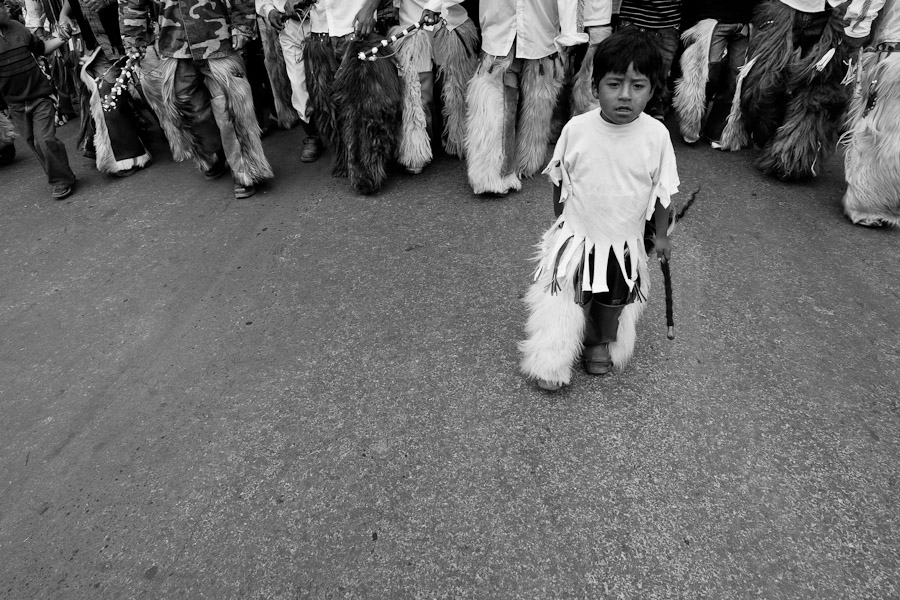
Indian dancers wear tall, broad-rimmed, black cardboard hats, painted over by religious and political symbols, like a Christian cross, a swastika or a star.
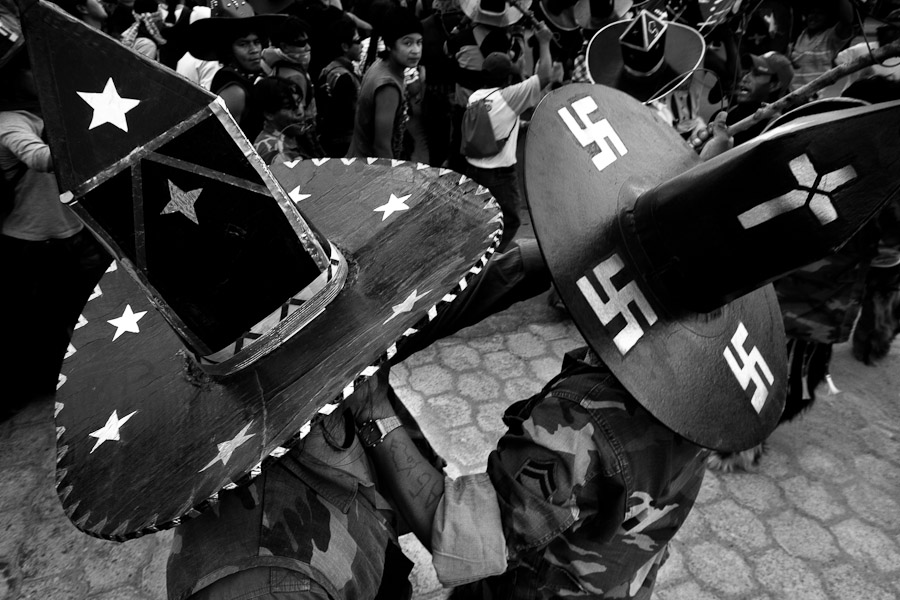
Music is an integral part of the festival. Twin flutes (flautas gemelas) play a repeating melody, while other instruments (guitars, violins, a melodica) keep the rhythm.
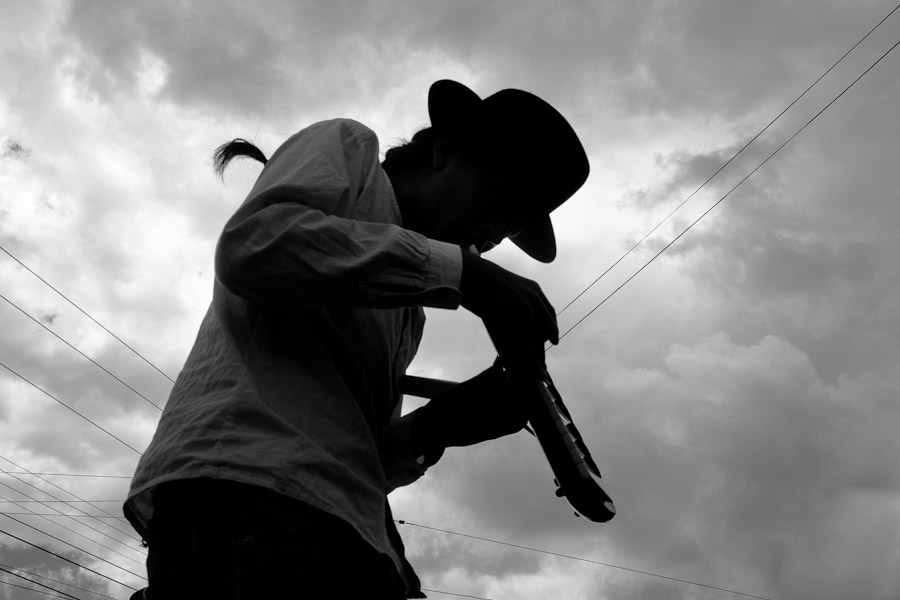
Most of the dancers wear the military camouflage and wave dangerously the steel-wire whips.
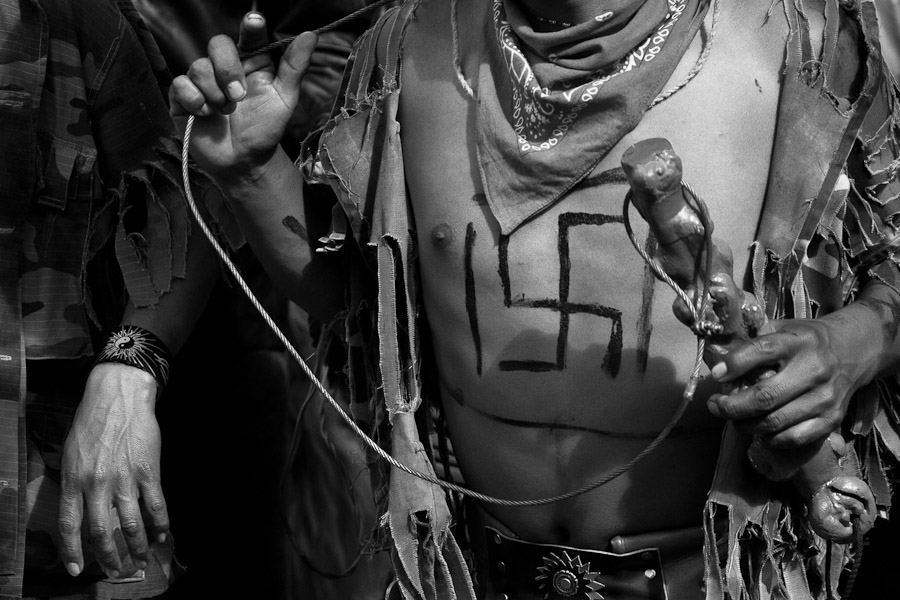
From early morning of the feast day, various groups of San Juan dancers from remote mountain villages dance in a slow trot towards the main square of Cotacachi.
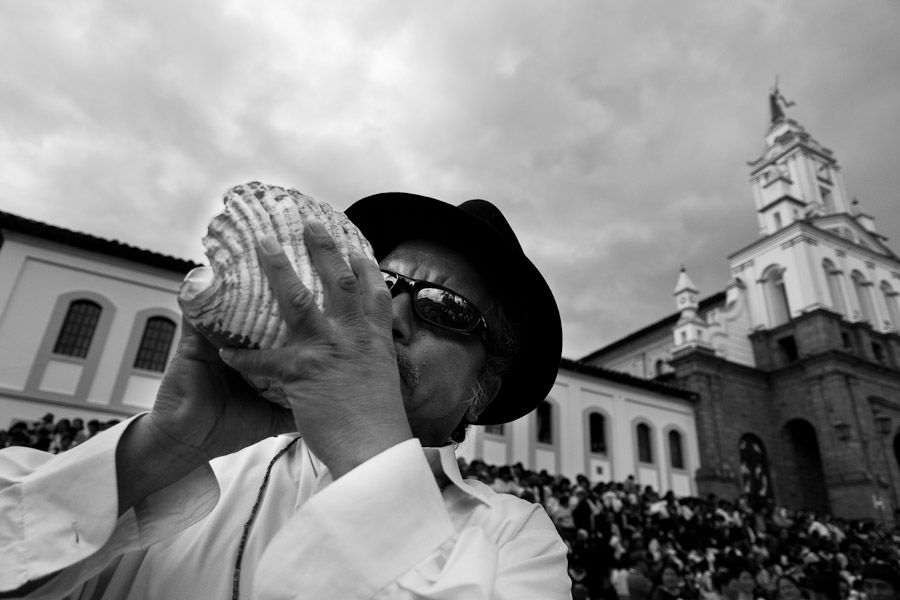
‘Sanjuanes’ (dancers) dance in a counter-clockwise direction around the plaza, seeking to conquer and dominate the square and do not let their rivals enter.
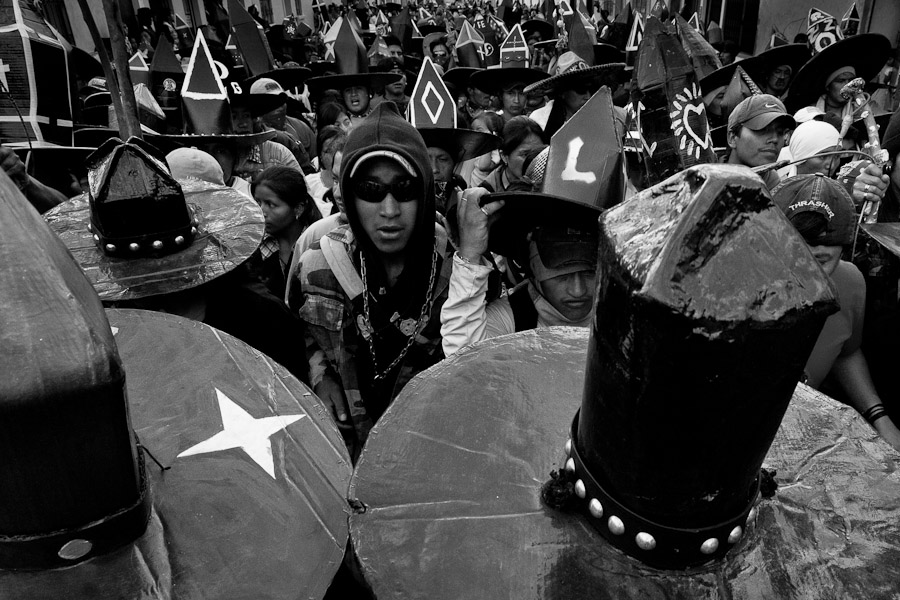
Indian dancers pound in synchronized dance rhythm, shout loudly, whistle and wave whips, showing the strength, endurance and aggression.
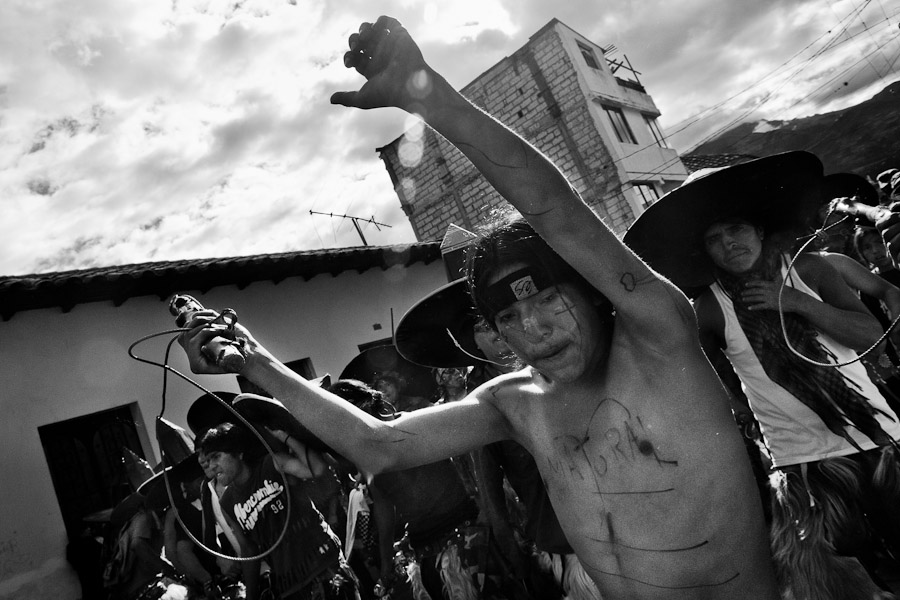
The high tension and aggression between dancing Indians must be often eliminated by the riot police squads.
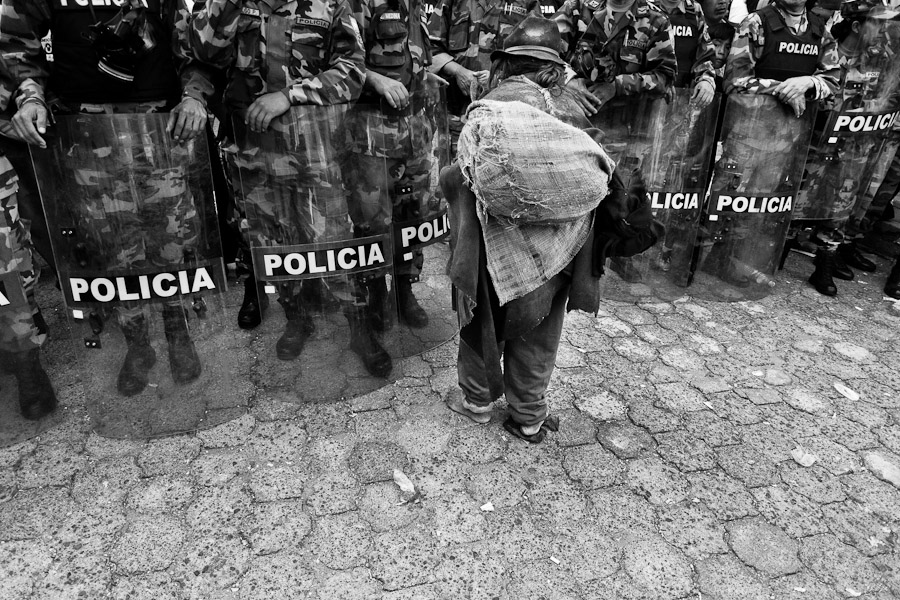
The beauty contest winners are the only female members of the dancing groups that participate in the ‘Taking of the square’ ritual.
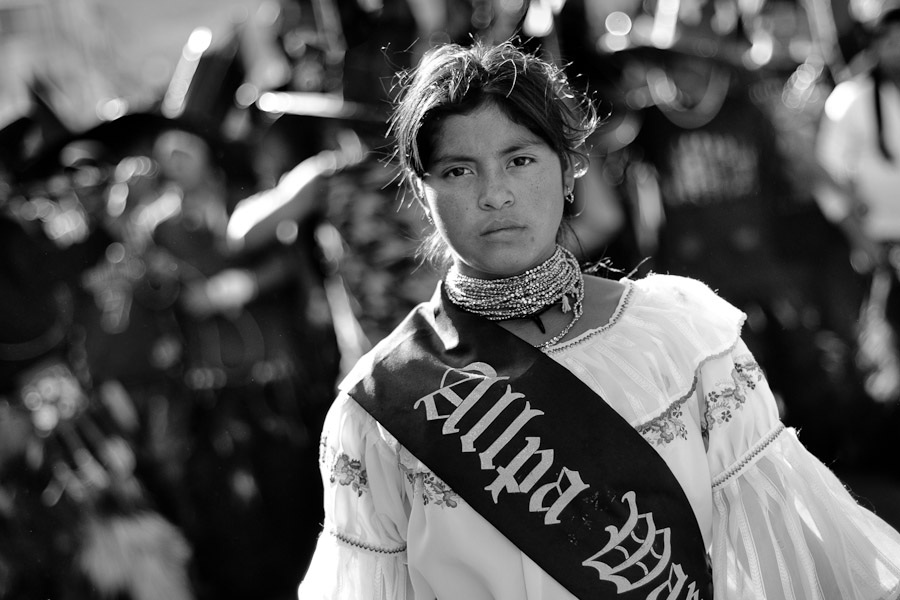
Although the unrestrained consumption of alcohol helps dancers to dance long hours without food and breaks, some Indians often fall in sleep right on the street.
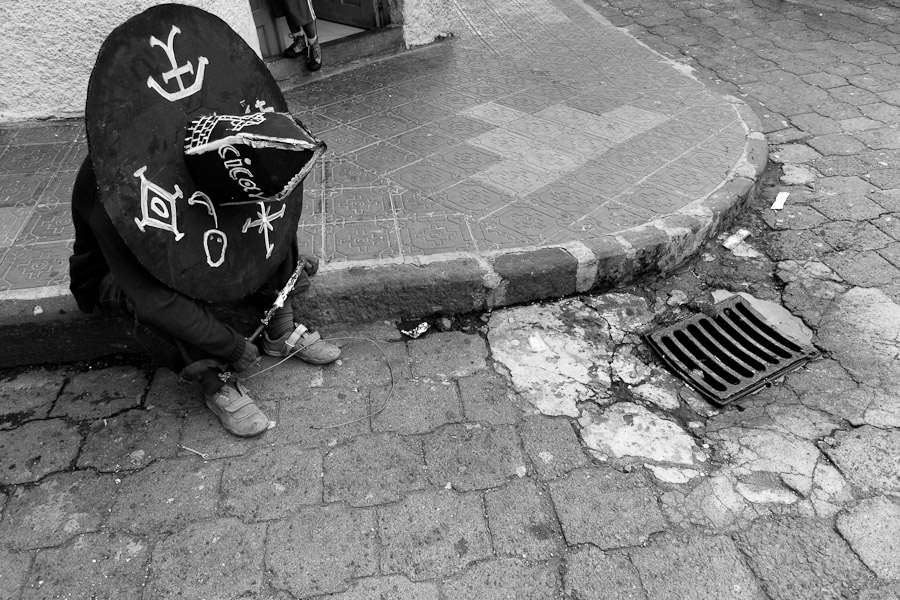
If not moderated by the police in time, the rivalry between dancers always ends up in violent clashes when stones are thrown and fights with knifes and sticks are common.
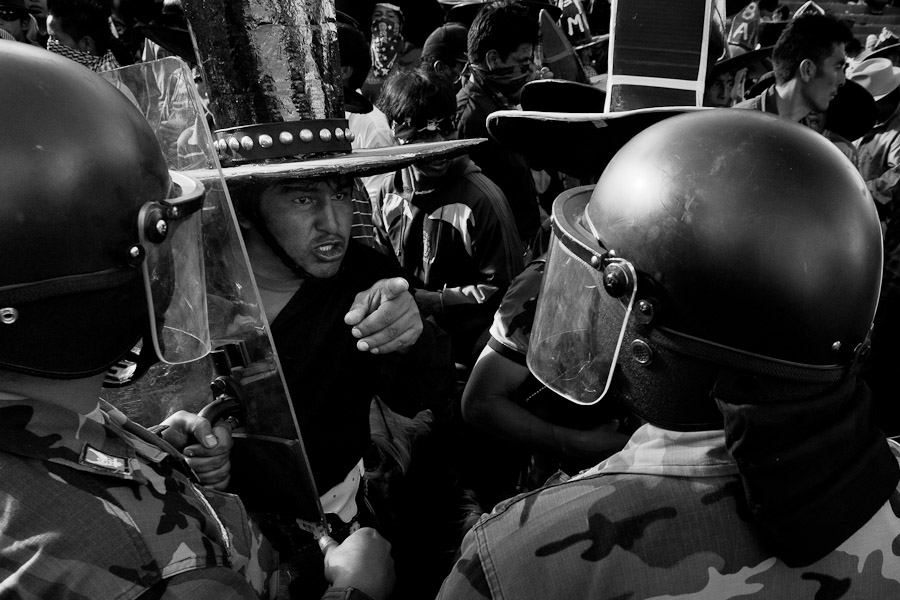
The violent confrontation between the dancing groups is called ‘tinkuy’. In the Andean mythology, this ritual battle is sacred and it is believed that spirits enter our world in this moment.
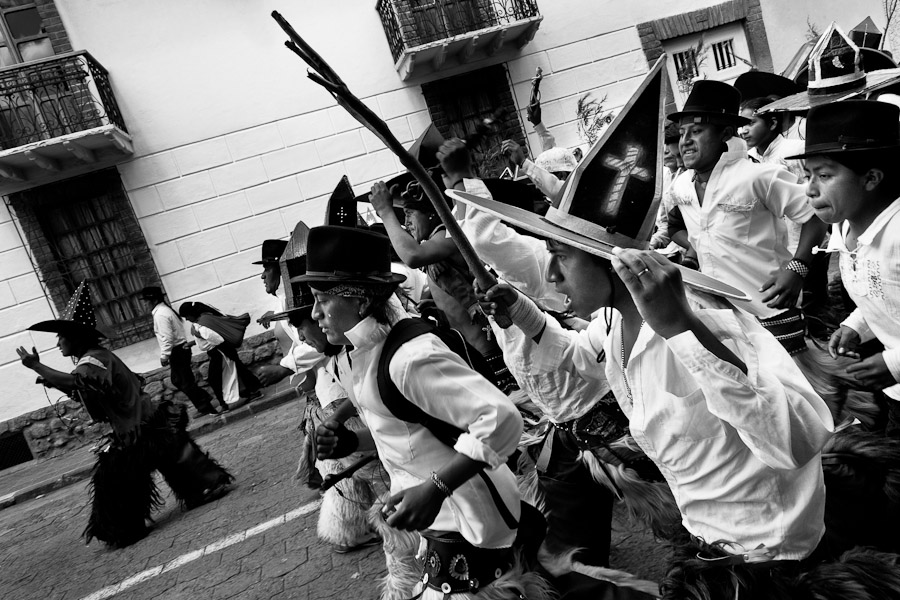
Five centuries of the Christian religion rule have blended the original pagan rituals with the catholic celebration of San Juan (Saint John).
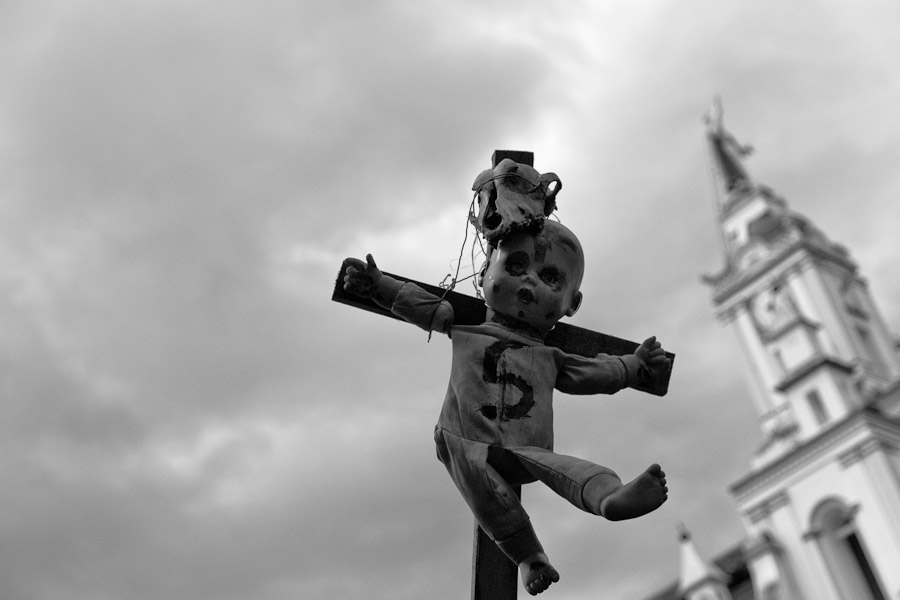
Furious Fiesta
Cotacachi, Ecuador – June 2010
‘La toma de la Plaza’ (Taking of the square) is an ancient tradition kept by Andean indigenous communities during the summer Inti Raymi festivities. Five centuries of the Christian religion rule have blended the original pagan rituals with the catholic celebration of San Juan (Saint John). From early morning of the feast day, various groups of San Juan dancers from remote mountain villages dance in a slow trot towards the main square of Cotacachi. Reaching the plaza, ‘sanjuanes’ (dancers) start to dance around. They pound in synchronized dance rhythm, shout loudly, whistle and wave whips, showing the strength, endurance and aggression. Most of the dancers wear the military camouflage, goatskin chaps and tall, black cardboard hats, painted over by religious and political symbols. Dancers from either the upper communities (El Topo) or the lower communities (La Calera), joined in respective coalitions, seek to conquer and dominate the square and do not let their rivals enter. If not moderated by the police in time, the tension between groups always ends up in violent clashes when stones are thrown and fights with knifes and sticks are common.













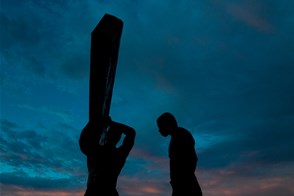
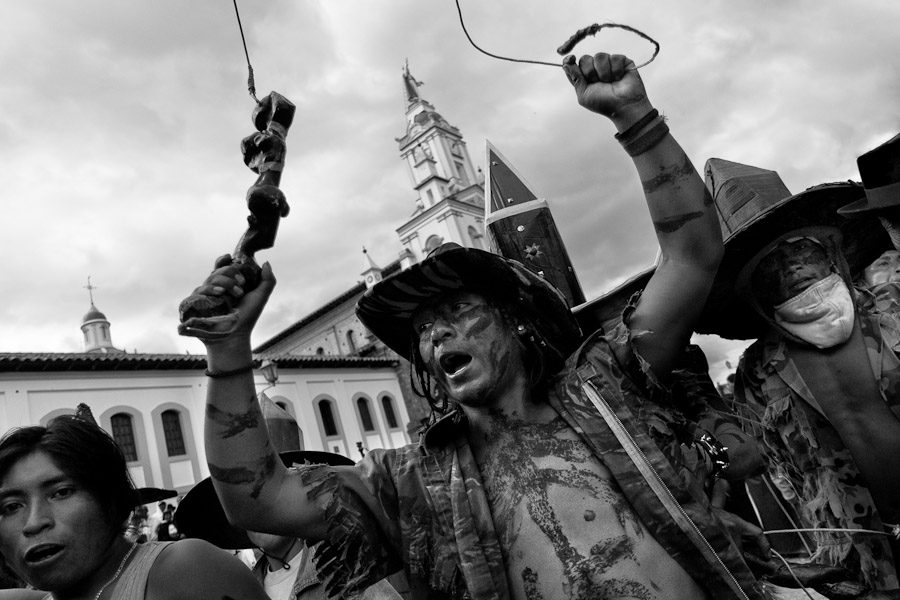

no comments yet